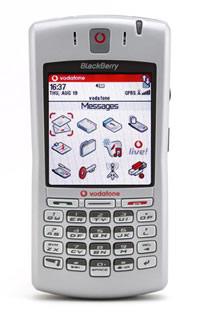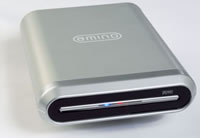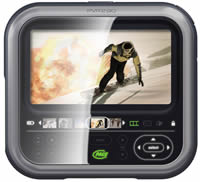Rumours of a new iPod are appearing – fuelled by a report on macintosh rumour site Think Secret. The new iPod is said to be built around a 60Gb drive and have a 2.2” high resolution colour screen. Users will also be able to view album artwork on the screen whilst listening to their music libraries, so let’s hope Apple have done something about the battery capacity then, because that sounds like about two hours of play time right there.
Better still, the screen is intended to display colour pictures from digital cameras copied to the the iPod – an extension of the photo storage facility introduced in a recent software update. Additional rumours state that the new player will be able to display pictures on a TV, perhaps even set to music.
As far as looks go, the casing for the new iPod will follow the design of its predecessors, although 2mm thicker… possibly to accomodate a new, higher-capacity battery.
There is no official confirmation about the new iPod from Apple, and nor will there be – the company never make statements about forthcoming products. Though some claim they do have a tendency to drop rumours here and there to stoke interest.
Several factors have combined to add a note of authenticity to the latest rumours: the new PP5020 processor from iPod chipmaker PortalPlayer features support for a colour display and TV output – whilst playing music. Toshiba, disk supplier for Apple’s iPod, has also just announced a new 1.8” 60Gb drive – and let slip that Apple had ordered a large quantity of them.
If a new colour screen iPod is on its way, then the timing is sure to lead to shortages as fans try to ensure they get on in time for Christmas, particularly at the rumoured price of US$499 (€402).
 Vodafone have today announced a new form of BlackBerry, the 7100v. It has been designed with the BlackBerries creator, RIM (Research In Motion) and will be the first release of a new form factor.
Vodafone have today announced a new form of BlackBerry, the 7100v. It has been designed with the BlackBerries creator, RIM (Research In Motion) and will be the first release of a new form factor. Amino, the broadcast electronics company based in Cambridge, UK, have unveiled the AmiNET500, a tiny, low-cost, Internet Protocol Television (IPtv) set top box with built in PVR. The diminutive 184mm x 240 x 56 box can hold up to 40 hours of programming on its 80Gb drive. It runs on a Linux platform and uses a Java-based PVR application
Amino, the broadcast electronics company based in Cambridge, UK, have unveiled the AmiNET500, a tiny, low-cost, Internet Protocol Television (IPtv) set top box with built in PVR. The diminutive 184mm x 240 x 56 box can hold up to 40 hours of programming on its 80Gb drive. It runs on a Linux platform and uses a Java-based PVR application Pace, UK-based supplier for TV-focused technology, announced what they claim is the world’s first mobile personal video recorder of payTV.
Pace, UK-based supplier for TV-focused technology, announced what they claim is the world’s first mobile personal video recorder of payTV.